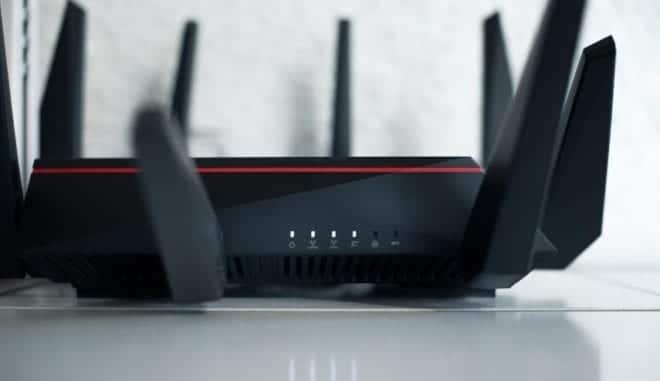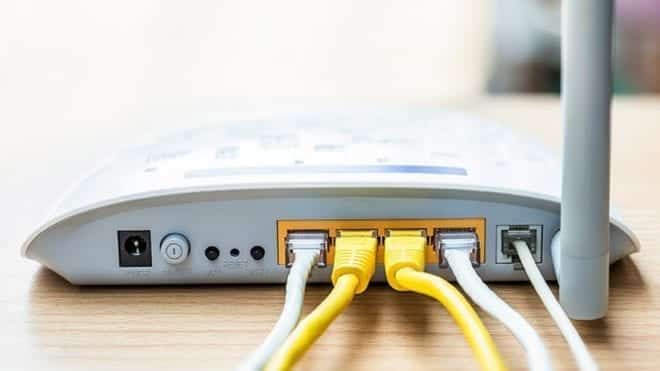The positioning of the router at home and the number of devices we connect are two key factors for (not) having the best connection speed for both the router and the Internet, and many times the fault is ours if we cannot enjoy maximum speed.
As with RAM, the faster the Internet connection speed, the better. The virtual assistants, laptops and telephones, the consoles… and often we cannot, both because of the distance, and because it is not possible, “spread” a cable, to have the maximum speed, so everything ends up connecting to Wi-Fi.
Below, we tell you what are the things that could cause Wi-Fi to slow down and some things you can do to improve the situation and enjoy the maximum possible speed.
Make sure you are connected to the best network
Most modern routers, as well as consoles, cell phones, and computers, can be connected to a 2.4 GHz network, but also to 5 GHz networks (not to be confused with 5G). 2.4 GHz networks are networks with much higher coverage, but also at a lower speed.
5 GHz networks have lower coverage, but fewer interferences, are able to move large amounts of data in two directions and offer greater speed when sending information across multiple channels simultaneously.
The current routers are dual-band and have 2.4 GHz and 5 GHz antennas, each with different passwords, it is better to be clear about which devices are worth connecting to each of them.
Furthermore, 2.4 GHz networks are generally congested due to the interference of devices such as wireless mice, some appliances and virtually any device that operates on that band, so our recommendation is, if you have a dual-band router, connects the following devices to each band:
- 2.4 GHz band- mobile phones, computers we use to work (without loading / downloading large amounts of data), Wi-Fi devices for the home, virtual assistants. Devices that require a connection to the Internet with sufficient speed and throughout the house.
- 5 GHz band- consoles, computer games, computers in which we will work with large amounts of data to upload/download from the Internet. We need maximum speed and stability.
In this way, we don’t congest any of the two networks having the devices distributed equally.
Slow connections and many network users
One of the problems with 2.4 GHz networks is that, as we have said, they quickly become saturated and, with few users and connected devices, they start to slow down. Many users/devices in the network congest the channels and the router is not able to distribute the data optimally, so there will be a device that is fine … and the others will suffer the consequences.
To solve, you need to connect different devices to different networks, as we said earlier, but if the speed is not enough, there will be problems. It’s a “past” error with fiber, especially from 50 Mb upwards, but not everyone can access this technology and ADSL networks, or low-speed fiber, continue to occur. The solution? Update your subscription!
Attention to the channels
In Europe, we have 13 channels for 2.4 GHz networks, a figure that was good a few years ago, but now it is running low due to the number of devices we have at home. The best thing is to start looking at which channels the devices we have are connected and change the channels manually from the router’s options.
With modern routers, the channels can only be reset by restarting the router. And it’s one of the reasons why Wi-Fi is slow.
Restart the router
Restarting the router allows us to reset the speed to maximum. It sounds silly, and we laugh when we call the technical service to say that the connection goes wrong and the first thing they do is recommend restarting, but – sometimes – they are right.
As we have said, older router models are very congested and their channels are reordered only when the router is restarted. Furthermore, at other times, due to various problems, the router is congested or unable to execute the protocols to correctly distribute the data.
No kidding, if you notice that the Internet is slow, the first thing you need to do is restart the router. If everything returns to normal, you have solved the problem.
Watch out for Wi-Fi extenders
Many users who have big houses think that a Wi-Fi extender will improve the situation. Yes, the signal can go farther, but the speed could decrease considerably. You have to keep an eye on two situations:
- If it is an economic extender and the router is old, it is more likely that there will be interference and the connection speed will drop dramatically.
- If it is an extender with a speed lower than the maximum that the router can offer, obviously you will not exploit all the bandwidth.
Devices with problems
It’s a more remote problem, but it’s also something that can slow down Wi-Fi. If there is a device that has a software problem that automatically takes up more channels, it is necessary to “limit” the connection of this device in the router options.
A laptop could cause this problem. As soon as the rest of the devices are connected it will start to go slow, they will return to normal as soon as we turn off the affected laptop. It is easy to identify since it is possible to immediately see who the black sheep is.
Watch out for router placement
Finally, another factor that can slow down your Internet connection is the router’s positioning. As rebooting is an obvious solution, so positioning is also very important.
Better to place the modem in a free area where the network signal can freely reach all the devices and above all place it in a central area or when closer to the devices to be connected.



